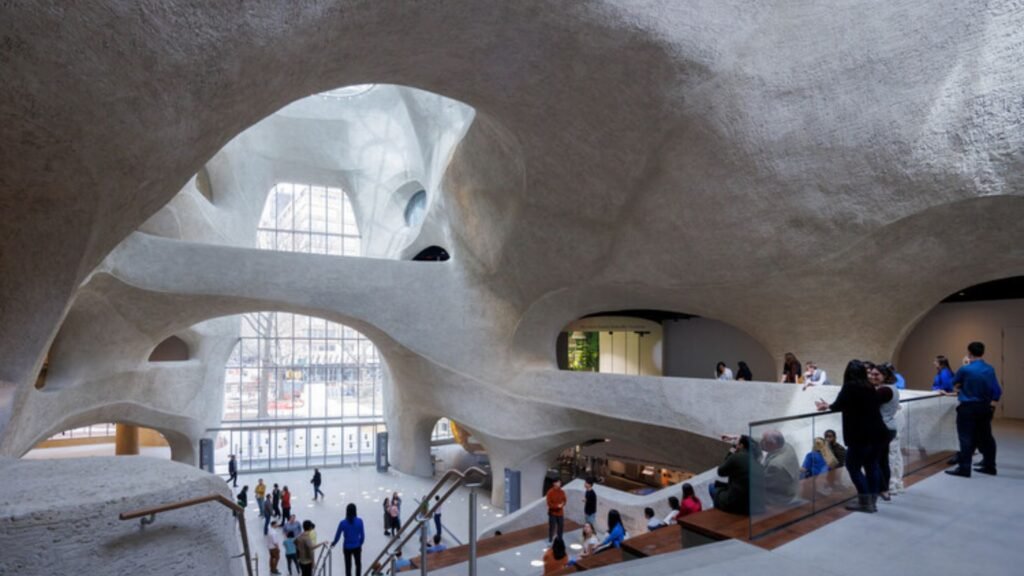Capturing the essence of architectural designs in photos requires a keen eye, thoughtful planning, and the right techniques. Whether you’re photographing modern skyscrapers or historic buildings, the goal is to highlight the unique features and beauty of the architecture. Here are some strategies to help you effectively showcase architectural designs in photos.
Tips for Showcasing Architectural Designs in Photos
1. Choose the Right Time of Day
Lighting plays a crucial role in architectural photography. The best times to shoot are during the golden hours – shortly after sunrise and just before sunset. During these times, the light is soft and warm, which can create dramatic shadows and highlight the textures and details of the building. Avoid the harsh midday sun, which can create unflattering shadows and wash out the details.

2. Use a Wide-Angle Lens
A wide-angle lens is a must-have for architectural photography. It allows you to capture the entire structure and its surroundings, giving viewers a sense of scale and context. However, be cautious of distortion, which can make straight lines appear curved. Some lenses have built-in correction features, or you can correct distortion in post-processing.
3. Consider Your Angles
The angle from which you shoot can drastically change the perception of the architecture. Low angles can make buildings appear more imposing and grand, while high angles can provide a more comprehensive view of the structure and its environment. Experiment with different perspectives to find the most flattering angle for each building.
4. Focus on Details
While capturing the entire building is important, don’t forget to zoom in on the details. Architectural designs often feature intricate elements such as carvings, columns, and textures that deserve attention. Close-up shots of these details can add depth to your portfolio and highlight the craftsmanship involved in the construction.
5. Use Leading Lines
Leading lines are a powerful compositional tool in photography. They guide the viewer’s eye through the photo and can emphasize the design and structure of the architecture. Look for natural lines in the environment, such as roads, pathways, or the edges of buildings, and incorporate them into your shots.
6. Incorporate the Surroundings
The surroundings of a building can add context and interest to your photos. Including elements like trees, water features, or neighbouring structures can provide a sense of place and enhance the overall composition. Make sure these elements complement the architecture rather than distract from it.
7. Shoot at Different Times
While golden hours are ideal, don’t limit yourself to these times. Shooting at night can also produce stunning results, especially if the building is well-lit. Nighttime photography can highlight the lighting design of the architecture and create a completely different mood.
8. Pay Attention to Symmetry
Many architectural designs incorporate symmetry, which can be very pleasing to the eye. Capture symmetrical elements head-on to emphasize balance and harmony in your photos. Aligning your shot perfectly can create a powerful and aesthetically pleasing image.
9. Use Reflections
Reflections can add a unique and artistic element to your architectural photos. Look for reflective surfaces like water, glass, or polished floors. Incorporate these reflections to create a sense of depth and dimension, making your photos more dynamic and interesting.
10. Post-Processing Techniques
Post-processing is essential in architectural photography. Adjusting the exposure, contrast, and colour balance can enhance the details and overall look of your photos. Use software like Adobe Lightroom or Photoshop to fine-tune your images. Be careful not to over-edit; the goal is to enhance the natural beauty of the architecture, not to create unrealistic effects.
11. Include Human Elements
Adding people to your architectural photos can provide a sense of scale and bring the scene to life. It can also show how the space is used and appreciated. Capture candid moments of people interacting with the building or include them as silhouettes to add interest without drawing attention away from the architecture.
12. Plan Your Shots
Before heading out to shoot, take some time to plan your shots. Research the building and its history, look for inspiration online, and decide which aspects you want to highlight. Planning can help you make the most of your time and ensure you capture all the important features of the architecture.
Conclusion
Showcasing architectural designs in photos is all about highlighting the unique features and beauty of the structures. By choosing the right time of day, using appropriate equipment, experimenting with angles, and focusing on details, you can create stunning images that do justice to the architecture. Incorporating surrounding elements, reflections, and human elements can add depth and context to your photos. Remember to plan your shots and use post-processing techniques to enhance your images. With these strategies, you’ll be able to effectively showcase architectural designs and create a compelling portfolio of architectural photography.

